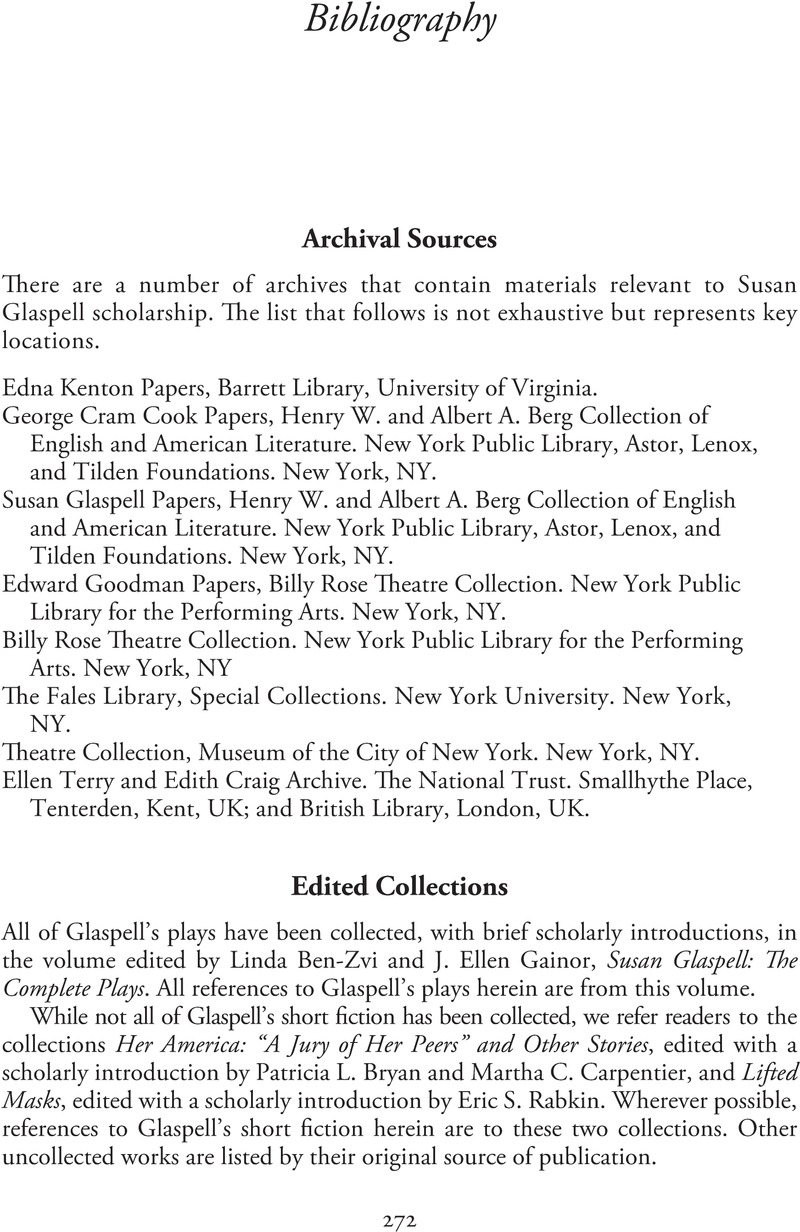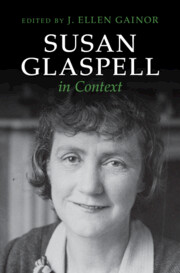Book contents
- Susan Glaspell in Context
- Susan Glaspell in Context
- Copyright page
- Contents
- Figures
- Contributors
- Preface
- Acknowledgments
- A Chronology of Glaspell’s Life and Works
- Part I Susan Glaspell’s Early Writing and Her Midwestern Contexts
- Part II The Bohemian Context: Greenwich Village, Provincetown, and the Rise of American Modernism
- Part III Susan Glaspell and American Culture and Politics
- Part IV Susan Glaspell, Women Artists, and Feminist History and Criticism
- Part V Susan Glaspell in Broader Geographical Contexts
- Part VI Susan Glaspell on Stage and Screen
- Bibliography
- Index
- References
Bibliography
Published online by Cambridge University Press: 13 July 2023
- Susan Glaspell in Context
- Susan Glaspell in Context
- Copyright page
- Contents
- Figures
- Contributors
- Preface
- Acknowledgments
- A Chronology of Glaspell’s Life and Works
- Part I Susan Glaspell’s Early Writing and Her Midwestern Contexts
- Part II The Bohemian Context: Greenwich Village, Provincetown, and the Rise of American Modernism
- Part III Susan Glaspell and American Culture and Politics
- Part IV Susan Glaspell, Women Artists, and Feminist History and Criticism
- Part V Susan Glaspell in Broader Geographical Contexts
- Part VI Susan Glaspell on Stage and Screen
- Bibliography
- Index
- References
Summary

- Type
- Chapter
- Information
- Susan Glaspell in Context , pp. 272 - 295Publisher: Cambridge University PressPrint publication year: 2023

